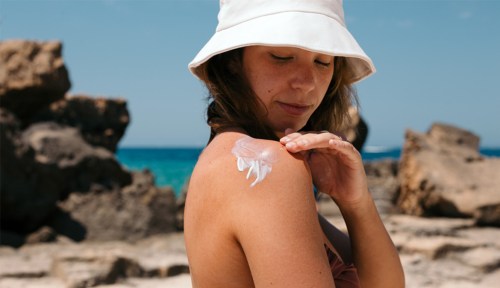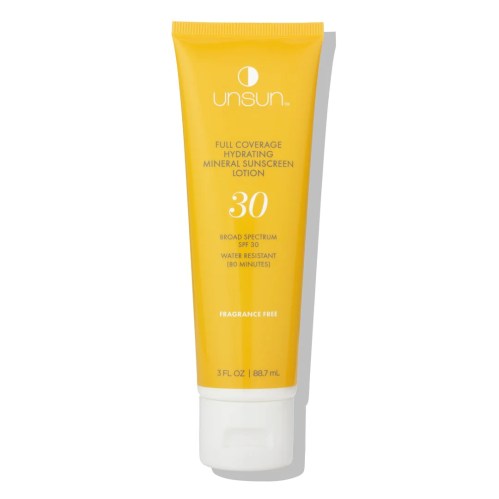Our editors independently select these products. Making a purchase through our links may earn Well+Good a commission
Maui Will Now Require Mineral Sunscreen—And Ban All Others—To Protect Coral Reefs
Maui non-mineral sunscreen ban means the sale and distribution of all non-mineral sunscreens is not allowed starting on October 1.

Maui County, which includes the islands of Maui, Lānaʻi, and Molokaʻi, will now ban the sale and distribution of all non-mineral sunscreens starting on October 1, 2022. The ban follows a 2018 state-wide ban throughout Hawai’i which banned the sale of sunscreens that contain oxybenzone and octinoxate, two of the 14 chemical sun blockers that have approval from the Food and Drug Administration (FDA).
Experts in This Article
board-certified dermatologist
“We must remove the significant ecological stressor of non-mineral sunscreens from our marine environment,” Councilmember Kelly Takaya King, who chairs the Climate Action, Resilience and Environment Committee, which recommended approval of the law last year, said in a press release. “This ordinance is one important step to protect our coral reefs, which provide the first defense against erosion from sea-level rise, and are critically important for biodiversity, recreation, food sources, and our tourism industry.”
This law, passed unanimously by the Maui County Council last year, means Maui County has the strictest sunscreen laws in the country. However, Hawai’i County, which encompasses the main island of Hawai’i (AKA The Big Island) passed a similar ordinance that will go into effect on December 1. Other areas like the U.S. Virgin Islands, Palau, and Aruba have partial chemical sunscreen bans.
These bans are the result of extensive research that has shown that non-mineral sunscreens cause harm to coral reef systems. Sun blockers, however, are just one part of the problem. Rising sea temperatures, the increased intensity of natural disasters, and other environmental aggressors also contribute to the death of coral reefs.
Maui County suggests the use of “non-nanotized” zinc oxide (as nano minerals can be toxic to invertebrates) or titanium dioxide sunscreens as opposed to chemical sunscreens. Thankfully, mineral sunscreens—which have a reputation for leaving a chalky, white cast after application—have come a long way over the past few years, with more and more sheer and moisturizing formulations on the market. Mineral sunscreens are also the best option for those who experience hyperpigmentation as they protect against visible light, which is the type of light that contributes to skin discoloration, as well as ultraviolet light.
Although chemical sunscreens are deemed safe for human use, an increasing number of people are concerned about the way chemical sunscreen could impact human health. Much of the controversy stems from 2020 FDA research that showed that some of these chemical sunscreens are absorbed into our blood when we use them. However, the agency maintains that absorption does not mean these sunscreens are unsafe and that more research is needed.
“That’s why I just stick to the mineral sunscreens,” says Ivy Lee, MD, a board-certified dermatologist in Pasadena, California. “Zinc oxide and titanium dioxide are sunscreen ingredients that sit on the top layer of the skin. They function as a physical shield against ultraviolet radiation, and they are not absorbed at all. I think that’s why most of us in dermatology really recommend mineral sunscreens now. You don’t even have to go down that potential rabbit hole with the chemical sunscreens.”
Shop 3 of our favorite mineral sunscreens

Odacité Mineral Drops SPF 50 — $48.00
8 Stylish and Adjustable Office Chairs a Chiropractor Would Approve Of

ThirdLove Just Launched Bras That Help Balance Your Body Temperature—Here’s Why That’s a Game-Changer for Women in All Life Stages

These Are the Summer Essentials You Should Bring With You Every Time You Leave the House, According to a Derm and an RD


Unsun Hydrating Full Coverage Body Lotion SPF 30 — $32.00

Isdin Eryfotona Actinica — $60.00
Want even more beauty intel from our editors? Follow our Fineprint Instagram account for must-know tips and tricks.






